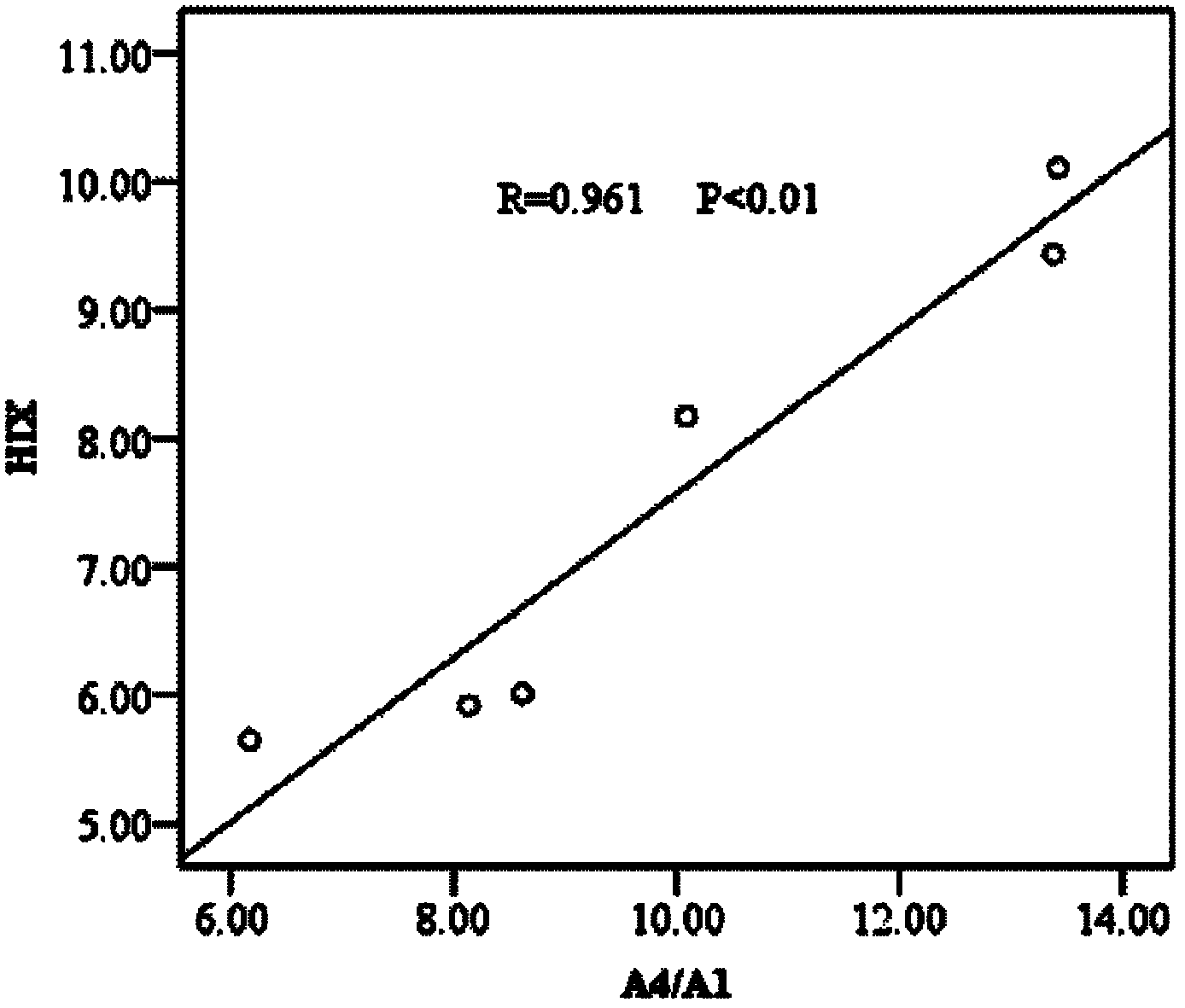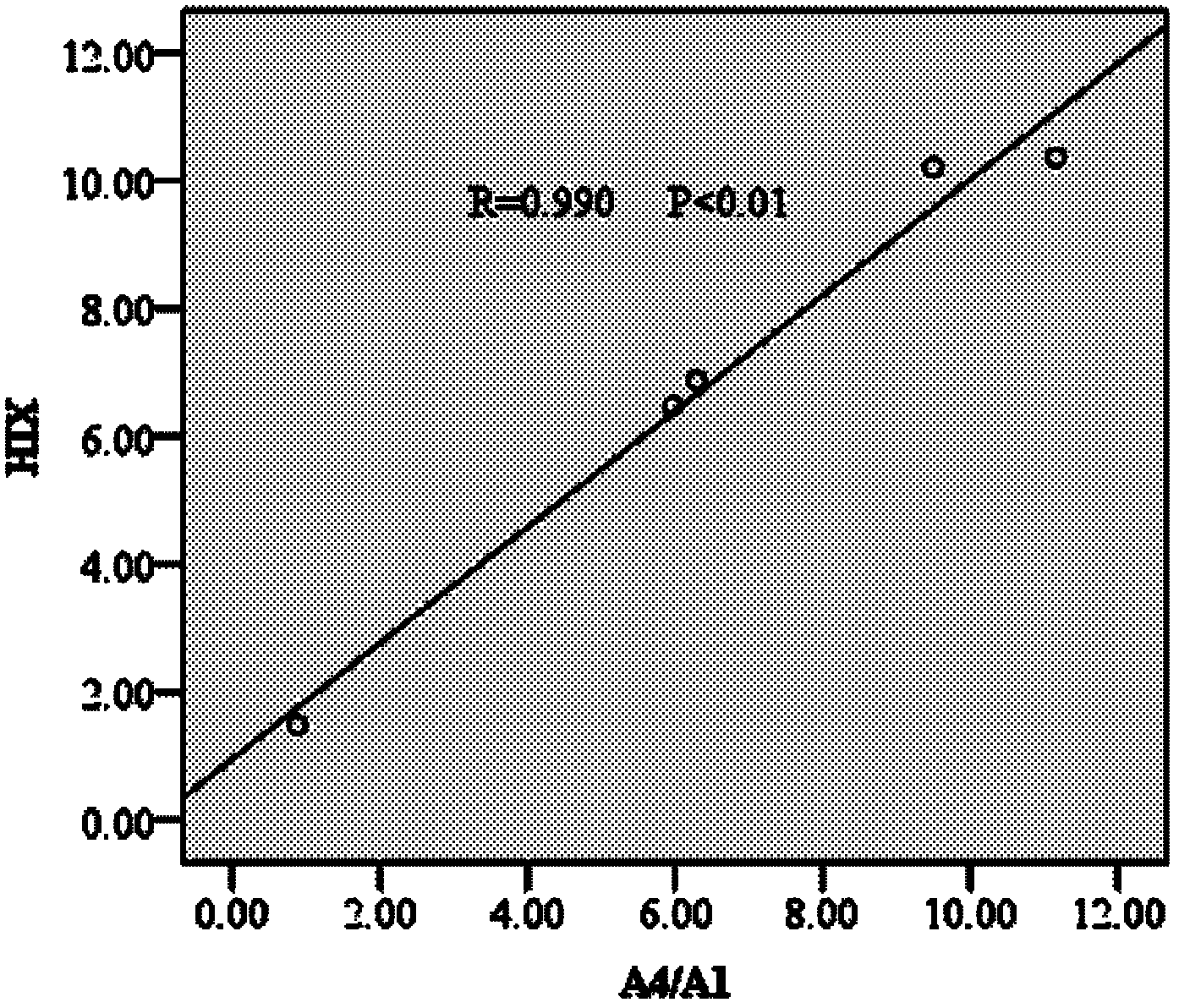Method for characterizing humification degree of compost
A technology of humification and composting, applied in the direction of material excitation analysis, fluorescence/phosphorescence, etc., can solve the problems of compost humification degree errors, etc., and achieve high accuracy, high repeatability, and high repeatability
- Summary
- Abstract
- Description
- Claims
- Application Information
AI Technical Summary
Problems solved by technology
Method used
Image
Examples
Embodiment 1
[0026] Collect 8g samples of cow manure composting days 0, 7, 14, 21, 28 and 41 from a composting plant in Zhangjiakou, add 80ml of deionized water after grinding, shake at 150rmp for 16h to obtain the extract, centrifuge at 4°C and 10000rmp for 10min to obtain The centrifugate was passed through a 0.45 μm filter membrane to obtain water-soluble organic matter samples.
[0027] Measure the DOC of the water-soluble organic matter sample and adjust the solution to DOC=7.0mg / L, put it into a cuvette to measure the three-dimensional fluorescence spectrum, set the excitation wavelength to 200-440nm, set the emission wavelength to 280-550nm, and set the slit The width is set to 10nm, and the scanning speed is 1500nm / min. During the scanning process, a 290nm filter is used to remove secondary Rayleigh scattering. After the spectrum is scanned, the data is exported. One point is taken every 1nm of the emission wavelength, and a 266-line×25 Columns of 3D fluorescence spectrum matrix da...
Embodiment 2
[0030] Collect samples 10 of 0, 7, 14, 21 and 41 days of composting in Beijing Asuwei Domestic Garbage Composting Plant, add 100ml of deionized water after grinding, shake at 150rmp for 16h to obtain the extract, centrifuge at 10000rmp for 10min to obtain the centrifugate, and pass the centrifugate A 0.45 μm filter membrane was used to obtain samples of water-soluble organic matter.
[0031] Measure the organic carbon DOC content of the water-soluble organic matter sample and adjust it to DOC=6.0mg / L, put it into a cuvette to measure the three-dimensional fluorescence spectrum, set the excitation wavelength to 200-440nm, and set the emission wavelength to 280-550nm. Slit width: the excitation wavelength is 10nm, the emission wavelength is 10nm, and the scanning speed is 1500nm / min. During the scanning process, a 290nm filter is used to remove secondary Rayleigh scattering, and the data is exported after spectral scanning. One point is taken for every 1nm of the emission wavelen...
PUM
 Login to View More
Login to View More Abstract
Description
Claims
Application Information
 Login to View More
Login to View More - R&D
- Intellectual Property
- Life Sciences
- Materials
- Tech Scout
- Unparalleled Data Quality
- Higher Quality Content
- 60% Fewer Hallucinations
Browse by: Latest US Patents, China's latest patents, Technical Efficacy Thesaurus, Application Domain, Technology Topic, Popular Technical Reports.
© 2025 PatSnap. All rights reserved.Legal|Privacy policy|Modern Slavery Act Transparency Statement|Sitemap|About US| Contact US: help@patsnap.com



